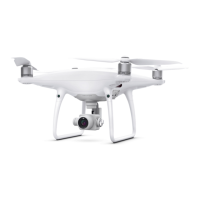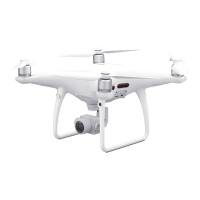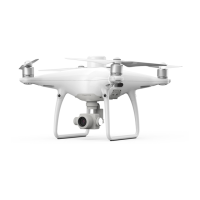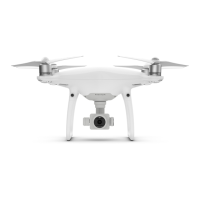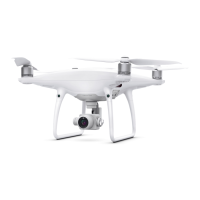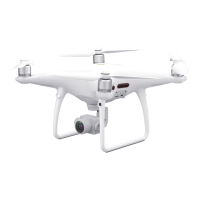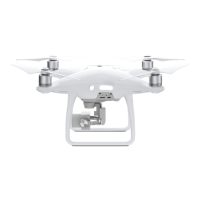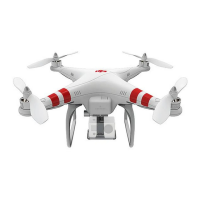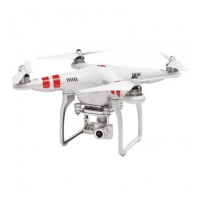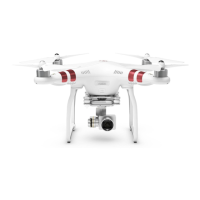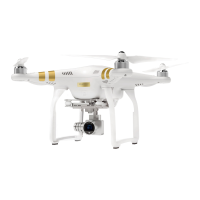12
EN
This content is subject to change.
Download the latest version from
www.dji.com
PHANTOM is a trademark of DJI.
Copyright © 2017 DJI All Rights Reserved.
regardless of altitude. (Land immediately if necessary)
2. DO NOT y the aircraft in densely populated areas, including
cities, sporting events, exhibitions, performances, etc.
3. DO NOT y the aircraft above the authorized altitude.
Remain well clear of and DO NOT interfere with manned
aircraft operations. Be aware of and avoid other aircraft and
obstacles at all times.
To avoid non-compliant behavior, serious injury and property
damage, observe the following rules:
1. DO NOT y the aircraft near or inside no y zones specied
by local laws and regulations. The no y zone list includes:
airports, borders between two sovereign countries or regions,
major cities/regions, etc., and is continuously updated. DO NOT
y around sensitive infrastructure or property such as power
stations, water treatment facilities, correctional facilities, heavily
traveled roadways, government facilities, military zones, etc.
2. DO NOT y the aircraft above the authorized altitude
3. ALWAYS keep your aircraft within visual line of sight (VLOS),
and use an observer to assist if needed.
4. NEVER use the aircraft to carry illegal or dangerous goods/
payloads.
1. Make sure you understand the nature/type of your ight
operation (such as for recreation, for public use, or for
commercial use) and have obtained corresponding approval
and clearance from the related government agencies before
ight. Consult with your local regulators for comprehensive
denitions and specic requirements. For users operating
their aircraft in the United States, please rst visit http://www.
knowbeforeyouy.org/ and take the most appropriate action that
suits your circumstances.
2. Please note that remote controlled aircraft may be banned
from conducting commercial activities in certain countries and
regions. Check and follow all local laws and ordinances before
ying as those rules may differ from those stated here.
3. Respect the privacy of others when using the camera. DO
NOT conduct surveillance operations such as image capture
or video recording on any person, entity, event, performance,
exhibition, and property without authorization or where there is
an expectation of privacy, even if the image or video is captured
for personal use.
4. Please be advised that in certain areas, the recording of
images and videos from events, performances, exhibitions, or
commercial properties by means of a camera may contravene
copyright or other legal rights, even if the image or video was
shot for personal use.
No Fly Zones
DJI always stresses safety during ight, and has therefore
developed various aids to help users comply with local rules and
regulations while ying. We strongly recommend that you update
the rmware to the latest version to ensure the following features
are fully updated:
No Fly Zones
1. No Fly Zones include but are not limited to major airports around
world, borders between two sovereign countries or regions,
major cities/regions, etc.
2. The complete list of No Fly Zones is listed on the ofcial DJI
website at http://ysafe.dji.com/no-y and is subject to periodic
updates in line with the latest regulatory requirements without
prior notice.
3. Some No Fly Zones are comprised of several zones. Each zone
features circles of various sizes. The aircraft will NOT be able
to take off in the inner most zone of the No Fly Zone, and will
descend to the specied altitude when it approaches the edge
of the inner most zone. Ground station functionality is disabled
when the aircraft is within a No Fly Zone.
4. Users are NOT able to set up waypoints within No Fly Zones.
Altitude Limit
1. Fly NO higher than 120 meters (400 feet) above ground level
and stay away from any surrounding obstacles.
2. If you intend to y above the default altitude limit, you are
required to accept the prompted disclaimer to enable the new
altitude limit. If a new altitude limit is set, you further understand
and agree that data including but not limited to ight telemetry
data and altitude limit changes could be uploaded to and
maintained on a DJI-designated server.
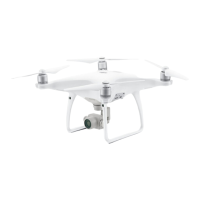
